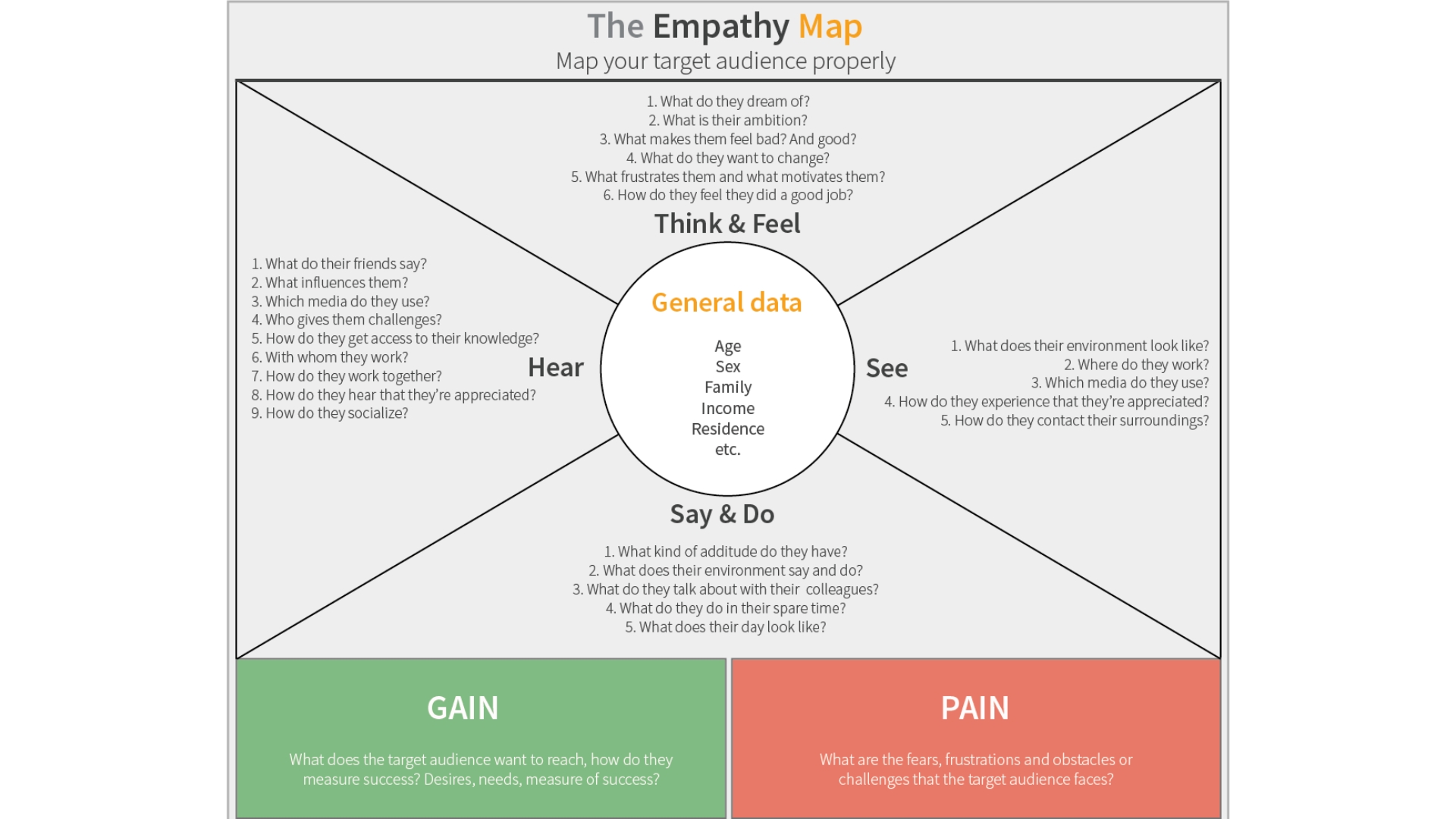How to Find Your Target Audience on Social Media
İpek Aktaş
Knowing your social media target audience is the most important thing you do as a marketer. All aspects of your social media strategy are informed by your target audience, including marketing campaigns.
Getting the desired result from your social media marketing campaigns is almost impossible without knowing your target audience.
The target audience defines the target group for your products or services. Knowing your target audience is essential as it will help you decide what type of product or service to sell, how to sell it, and more. In short, the more you clearly define your target audience, the more successful you will be in your marketing goals in your business. Let’s get to the reasons why.

What Is a Target Audience?
The target audience is the people most likely to consume particular media, products, or services. It includes both consumers and business buyers, but it’s usually defined by the type of business using the product or service.
Knowing who you’re selling to before starting a business will help you figure out what you’re offering and how it should be marketed.
When defining your target audience, you should consider several things, including their age, gender, and lifestyle. For example, if you are selling baby products, you might want to target parents who are planning for an upcoming birth or those who already have children. You should also consider the type of person they are—whether young or old, tech-savvy or traditional.
We can say that the target audience consists of two key components:
1. Purpose of the product or service: The purpose of a product or service is its core function. It should align with the target’s needs and be clearly communicated in the marketing materials.
2. Personal needs: Personal needs must be met for the target to consider buying your product. These may be emotional (e.g., feeling positive about something), functional (e.g., wanting to use a particular technology), or both (e.g., wanting to feel part of an exclusive group). By understanding these key components in your target audience, you can tailor your marketing efforts accordingly so as to reach potential customers and maximize sales.
Why Is Your Target Audience Important?
Knowing your target audience is important, as this will help you make important decisions in your product/service management and marketing strategy. Also, it enables you to figure out who your audience is and their needs. Your target audience also determines the price range of your products and services, which can impact your marketing budget. If you don’t know who your target audience is, it can make it challenging to design effective marketing campaigns.
When you know your target audience, you can;
· Figure out how best to reach them and what type of content they are likely to respond to,
· Create the right kind of content for them, which will help you to build a strong relationship with them and keep them coming back for more,
· Make a combination of creative elements to appeal to and inspire your audience’s emotions.
Your brand consists of your colors, logo design, and slogans, but it’s not just about them. You use a combination of creative elements to appeal to and inspire your audience’s emotions. Successful branding uses aspects of interest to attract the ideal audience.

Best Practices to Find Your Target Audience
First of all, understand the purpose of your social media account. Remember, the target audience might differ depending on the social media channel.
Start by Observing the People Who You Already Know
If you have a network of friends and family, try to figure out which of them are most likely to respond to your content. Maybe one person is always sharing your posts on Facebook, while another friend interacts with your Instagram account constantly. By staying in touch with these people, you can learn what they like and keep an eye out for trends that might be more relevant to your audience. You can use tools like Juphy and focus on keyword tracking to avoid missing out on valuable interactions.
Know Who Your Target Audience Is

It can be tricky if you’re not familiar with the demographics of your industry, but it can be a lot easier when you know who’s already engaging with your brand on social media. For example, if you know that your target audience is mostly women aged 25 to 35, you might consider creating a Facebook ad that appeals to this demographic. You can find out exactly who those likely candidates are using Facebook Insights and lookalike audiences.
Look at What Your Audience Is Already Engaging in
The next step is to look at what types of posts your audience shares on social media. If you look at what your audience shares on social media, you can often get a better idea of what they are interested in. For example, you could analyze the content of the posts your audience likes. If you are only looking at what your own posts are getting engagement on, you might be missing important information.
Make a List of Targets and Customize the Groups

Once you have your audience researched and identified, you will want to define your targets to reach out to. While you may have a general idea of your target audience, you will find that this information changes as your audience develops. Therefore, you will need to list your targets to reach and engage with. You can start with the accounts you have identified and then add any new accounts you come across.
Stay Tuned for Future Opportunities to Find New Audiences
As you continue to build your social media presence, you will find opportunities to reach out and find new audiences. As you do this, you can constantly assess your target audience’s interests. For example, if you are a restaurant and want to create an Instagram account, you can always look at your current customers and see their interests. It will often be a good indicator of your future customers’ interests.
Use Your Competitor’s Social Media Accounts

If you have a page on Facebook or Instagram that is relatively new, you can post content that is targeted at your current audience. This will allow you to assess your current audience. You can also look at your own social media accounts to see if you can identify new targets to reach out to. There are a lot of accounts that your competitors own, so you can see which ones to target.
Research Demographic Information

There are a lot of articles that try to get at the question of finding your target audience. Most of these articles look at the statistics and research from other social media sites, hoping to find similar information. Almost every source will tell you that you should look at your competitor’s social media accounts. If you have competition in your industry, chances are they are also on social media.
Evaluate Content on Popular Accounts in Your Genre
The final step to finding your target audience is to analyze what types of posts are shared on social media in your marketing niche. In this step, you will research popular blogs, portals, and news sites for social media posts related to your product or service.

You can gain valuable data to optimize your strategy by evaluating your industry’s engagement rates on social media content trends. In addition to researching popular accounts in your genre, another helpful tool for creating content is to take advantage of video and graphics templates. Video and graphics templates provide a quick and easy way to create branded and professional-looking content for social media. For example, websites like Videvo offer free Adobe Premiere Pro templates that can be used to create stunning videos, graphics, and animations.
Conclusion
Social media can be a powerful tool for businesses of any size. However, finding the right audience and targeting their social media posts can take time for the best results. Finding your target audience can be challenging, but it is possible with the right strategy. As a business owner, it’s crucial to determine who you’re targeting and why. We hope this guide has been helpful to you!
Now that you know your target audience, you can begin to create a plan to reach them. The more you know about your audience, the better you can understand what kind of content they respond to, and the more you can tailor your social media efforts to the right audience.
FAQ
The target audience is the people most likely to consume particular media, products, or services. It includes both consumers and business buyers, but it’s usually defined by the type of business using the product or service.
Knowing your target audience is important, as this will help you make important decisions in your product/service management and marketing strategy. Also, it enables you to figure out who your audience is and their needs.
1. Purpose of the product or service: The purpose of a product or service is its core function. It should align with the target’s needs and be clearly communicated in the marketing materials.
2. Personal needs: Personal needs must be met for the target to consider buying your product. These may be emotional (e.g., feeling positive about something), functional (e.g., wanting to use a particular technology), or both (e.g., wanting to feel part of an exclusive group). By understanding these key components in your target audience, you can tailor your marketing efforts accordingly so as to reach potential customers and maximize sales.
Related Article – Business Transparency on Social Media and Its Advantages

What is business transparency on social media? How can social media transparency build customer trust? Read now to learn more!

